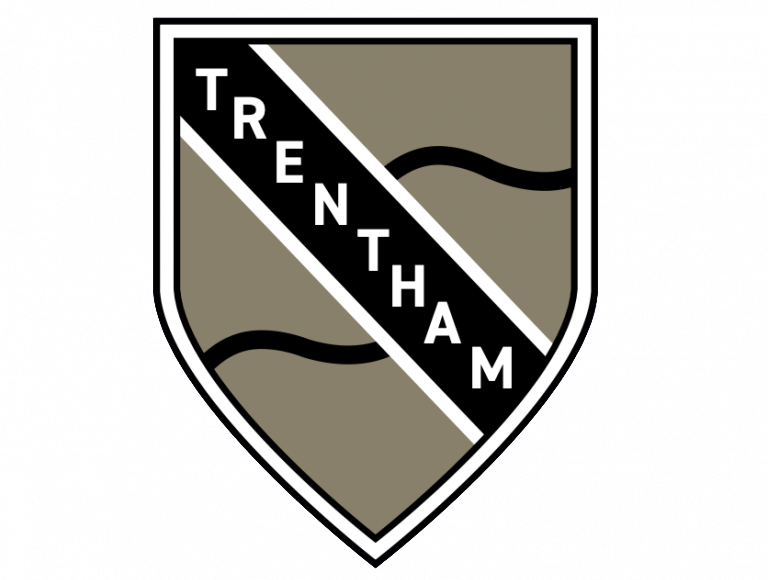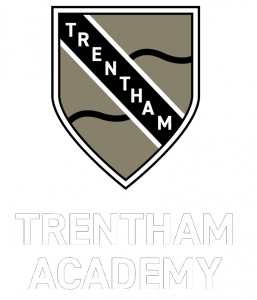Numeracy is throughout all subjects in the curricula; a love of learning and the love of numeracy is actively promoted across the Academy.
All through the year there are numeracy activities taking place. The Academy participates in the Junior and Intermediate UK Mathematics challenges and the UK MESME challenges, and also has its own Numeracy Ambassadors running lunch time sessions for students from all years. The National Numeracy Day is celebrated in May with competitions for all across the Academy. Links to real life Maths and careers are embedded in both the Numeracy and Mathematics curricula.
What are the UK Mathematics challenges?
UK Mathematics challenges both the Junior (for Years 7 & 8) and Intermediate (for Years 9 & 10) are ways of promoting a love of problem solving. Both the Junior and Intermediate Mathematical Challenges are 60-minute, multiple-choice Challenges encouraging mathematical reasoning, precision of thought, and fluency in using basic mathematical techniques to solve interesting problems. The problems are designed to make students think. Most are accessible, yet still challenge those with more experience. These Mathematical Challenges are the UK’s most popular school Mathematics competitions.
MESME MATHS
MESME Maths Circles is a taught enrichment programme. It is not an acceleration programme: in their Circles, students do not encounter content from a later Key Stage in the National Curriculum. This involves a small group of students come together regularly with an experienced, knowledgeable mentor – some of our numeracy Ambassadors, to grapple with intriguing questions, to discover and explore exciting ideas, and to learn to think like advanced mathematicians.
- students engage with tasks that they find challenging but satisfying;
- students develop their knowledge of significant topics in maths.
Numeracy Ambassadors
Trentham Academy has its own Numeracy Ambassadors (from years 10 and 11). These students dedicate a weekly lunch time helping students from other year group to improve on topics highlighted from the end of unit tests. As well as some students developing a growing confidence in Maths it also allows the Numeracy Ambassadors to share their knowledge and deepen their own understanding through their explanations.
All students are welcome to attend such designated lunch sessions.
Numeracy lessons
Trentham Academy has a bespoke Numeracy curricula personalised for year group.
The following scheme of work is used to those students in years 7 – 11. It is designed to improve the numeracy skills of students in order to help students become more numerate and to be able to apply such skills when developing functional skills- the skills needed to succeed in employment and life.
Year 7
| Teaching Block | Topic and Objectives |
| Autumn 1 | Place value: • Understand place value to 10000 • Understand place value to 100000 • Understand place value to 1000000 • Understand place value to 10000000 • Compare and order any numbers • Round numbers to 10, 100, 1000 • Round any number • Negative numbers in context • Assessment preparation and end of unit assessment Assessment |
| Autumn 2 | Addition and subtraction • Add whole numbers with more than four digits • Subtract whole numbers with more than four digits • Use inverse operations of addition and subtraction to check calculations • Multistep addition and subtraction problems • Add and subtract integers Assessment |
| Spring 1 | Multiplication • Multiply two digits by one digit • Multiply three digits by one digit • Multiply two digits by two digits – Area/Grid method • Multiply two digits by two digits – Column method • Multiply three digits by two digits • Multiply up to a four-digit number by a two-digit number Assessment |
| Spring 2 | Division • Recall 12 x 12 tables and how to use them to do division • Divide a two-digit number by a single digit with integer answer • Divide three-digit number by a single digit • Divide a decimal by a single digit • Long division (short division approach) with integer answers Assessment |
| Summer 1 | Fractions of amounts (shaded) and simplifying. a) Understand size in fractions b) Understand basic equivalent fractions and simplifying c) Shade fractions on a diagram d) Identify fractions from a diagram e) Find simple fractions of an amount such as ½ of 6 = 3 Assessment |
| Summer 2 | Revisit objectives which are areas requiring development. Final assessment covering year 7 objectives |
Year 8
| Teaching Block | Topic and Objectives |
| Autumn 1 | Place value: a) Understand what place value is b) Read, write, recognise and represent integers to ten million c) Use reasoning and problem solving skills to solve questions d) Compare and order numbers e) Use the inequality signs f) Round to the nearest 10, 100, 1000 Assessment |
| Autumn 2 | Addition and subtraction a) Use a mental strategy to add two digit numbers b) Use a written method to add integers up to 4 digits c) Use a mental strategy to subtract two digit numbers d) Use a written method to subtract integers up to 4 digits e) Solve problems involving addition and subtraction Assessment |
| Spring 1 | Multiplication and division of integers a) Recall multiplication and division facts up to 12 x 12 b) Multiply two digits by one digit c) Multiply two digits by two digit d) Divide two digits by 1 digit (no remainders, carrying needed) e) Divide 3 or three digits by 2 digits (including going into having to add a decimal point) Assessment |
| Spring 2 | Reading scales and time a) Use scale to measure units of mass, capacity and length b) Tell the time to the hour and half hour c) Tell the time to five minutes including quarter to and quarter past d) Tell the time in the 12- and 24-hour clock e) Solve problems involving converting units of time Assessment |
| Summer 1 | Fractions of amounts (shaded) and simplifying. a) Understand size in fractions b) Understand basic equivalent fractions and simplifying c) Shade fractions on a diagram d) Identify fractions from a diagram e) Find simple fractions of an amount such as ½ of 6 = 3 Assessment |
| Summer 2 | Revisit objectives which are areas requiring development. Final assessment covering year 8 objectives |
Year 9
| Teaching Block | Topic and Objectives |
| Autumn 1 | Addition and subtraction of decimals and money. a) Recap addition and subtraction of whole numbers b) Add and subtract decimals c) Solve problems involving addition and subtraction of money. Assessment |
| Autumn 2 | Multiplication and division of decimals. a) Recap multiplication and division of integers b) Multiply decimals by one or two digit integers c) Multiply a decimal with one decimal place by another decimal with one decimal place d) Divide decimals by an integer e) Divide a decimal with one decimal place by another decimal with one decimal place Assessment |
| Spring 1 | Fractions: Equivalent and simplifying. a) Identify fractions from a diagram b) Shade fractions on a diagram c) Simplify fractions using common factors d) Understand and write equivalent fractions e) Problem solve with equivalent fractions Assessment |
| Spring 2 | Ratio: Simplifying and basic sharing a) Understand the meaning of ratio b) Identify and write ratios from pictures and diagrams c) Simplify ratio by using common factors d) Share in a given (basic) ratio (using the bar model) e) Solve problems involving basic ratio Assessment |
| Summer 1 | Percentages of an amount, increase and decrease in multiples of 10%, 25%, 5% a) Understand size in percentages b) Write basic percentages from diagrams c) Calculate percentages of an amount (multiples of 5 and 10) d) Calculate percentage increase and decrease (multiples of 5 and 10) e) Solve problems involving percentage increase and decrease Assessment |
| Summer 2 | Revisit key objectives from above, identified as areas requiring development. This will be known as “Reach for the Stars” in line with Maths. Final assessment covering year 9 Objectives |
Year 10
| Teaching Block | Topic and Objectives |
| Autumn 1 | Revisit addition and subtraction of decimals and money. Round to decimal places and significant figures a) Add and subtract decimals up to 3 decimal places b) Solve worded problems involving decimals and money c) Round to a given number of decimal places d) Round to a given number of significant figures Assessment |
| Autumn 2 | Revisit multiplication and division of decimals. a) Multiply decimals with up to two decimal places b) Divide decimals with up to two decimal places c) Solve problems involving multiplication and division of decimals Assessment |
| Spring 1 | Converting fractions, decimals and percentages and comparing their equivalence a) Convert fractions to percentages and vice versa b) Convert decimals to percentages and vice versa c) Compare the equivalence of fractions, decimals and percentages using inequalities d) Order fractions, decimals and percentages Assessment |
| Spring 2 | Revisit ratios- simplifying & sharing, and link to fractions and money. a) Identify and write ratio from pictures and diagrams b) Simplify ratio using common factors c) Write ratio in the form 1:n or n:1 d) Write ratio as fractions and problem solve e) Share in a given ratio, including money f) Problem solve with ratio including a known amount. Assessment |
| Summer 1 | Revisit percentages and extend to simple interest. a) Recap calculate a percentage of an amount (multiples of 5 and 10) b) Calculate a percentage of an amount c) Calculate percentage increase and decrease d) Problem solve with percentage increase and decrease e) Calculate simple interest. Assessment |
| Summer 2 | Revisit objectives which are areas requiring development. Final assessment covering year 10 objectives |
Year 11
| Teaching Block | Topic and Objectives |
| Autumn 1 | Everyday awareness and problem solving involving Finance, bills, Hire purchase and tax a) Calculating monthly instalments – Hire purchase b) Mortgages- interest, c) Cost of running a car d) Cost of running a home e) How different rates of interest will affect the repayments of mortgages. Assessment |
| Autumn 2 | Everyday awareness and problem solving involving payslips, wages- hourly rate, commission, piecework. a) Calculating wages-hourly rate and piecework b) Calculating commission- percentages c) Calculating tax, using tax codes and taxable income d) Understanding a pay slip e) Minimum wage- finding if someone is being paid above or below the minimum wage Assessment |
| Spring 1 | Everyday awareness and problem solving involving credit/debt, loans and budgeting a) Best deals/offers b) Budgeting using credit and debit cards c) Researching loans, calculating the best savings d) Cost of furnishing your first home-given a set budget. e) Saving- compound interest – calculate the interest earned, the total investment etc. Assessment |
| Spring 2 | Revisit ratios- simplifying & sharing, and link to fractions and money. a) Simplifying ratio including different units (£s & pence etc.) b) Sharing quantities in a given ratio c) Problem solving questions involving fractions of amounts and percentages d) Percentage profit and loss e) Mixing shades using ratio. Assessment |



